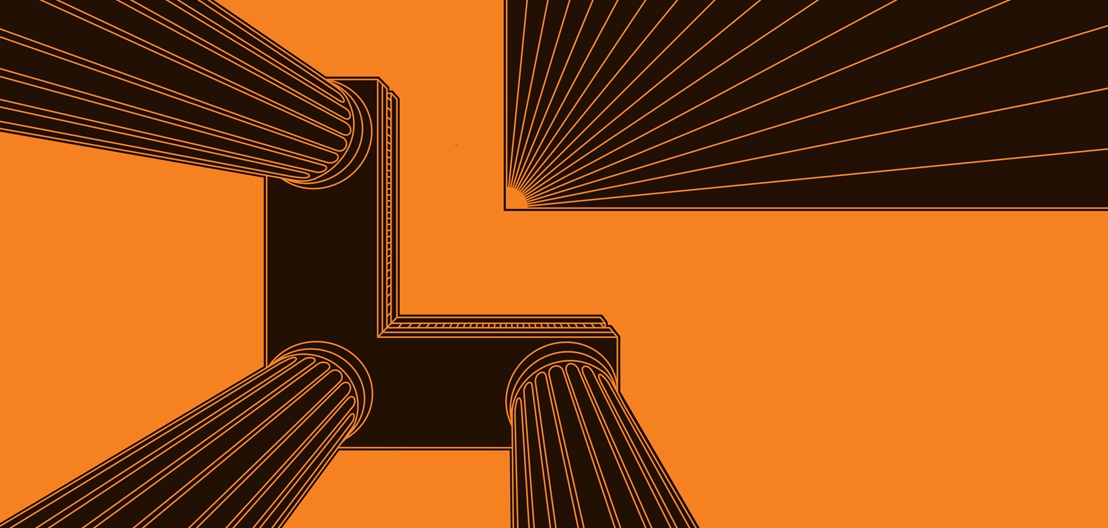Zbigniew Łagocki:
Photography
Photographing is sort of like touching, to me. Physically touching another human being. But also like crossing certain boundaries, crossing a certain intimacy…
Zbigniew Łagocki
Crossing ‘certain boundaries’ is a frequent and important element in Łagocki’s work. It exists in different modes – knowingly or unknowingly. Directly or indirectly – symbolically. It has various meanings. It is a way of delving into knowledge, exploring the world with a desire to understand it, and also a desire to understand another human being. It is also a way of negotiating and crossing physical boundaries, or the boundaries of intimacy, an attempt to understand the world through oneself – one’s own vision, limitations, knowledge, and culture – all the way to ‘designing it’ in photography.
Zbigniew Łagocki considers the manner in which he photographs something the most important in his work; he calls it ‘my own commentary’. He constructs his photographs with black and white, using vertical and horizontal lines, complemented with diagonals and a whole range of greys, to bring out what he calls ‘the inner tension of the photograph’. These divisions are fitted into a geometric grid of their own – juxtapositions of biological and abstract forms.
The concept of the image crystallized as early as the moment when he became interested in some motif. At each stage of development it underwent both construction and deconstruction. This allows us to speak of Zbigniew Łagocki’s works as ‘designed photographs’.
The artist’s field of vision, narrowed down to observation through one eye only, limits but also, paradoxically, focuses the vision on what matters. The gesture of selecting a frame and fixing it on the negative was just a sketch in Łagocki’s case. The complete image was generated in his mind. That image would only become visible on the photographic print. In Łagocki’s own words: ‘the whole work and pleasure in photographing is the work you do in the darkroom. That’s where the final result is created: the final image.’ Imperfections on the negatives are much like mistakes in one’s life – errors that he corrected in the process of developing the print. He would amplify some elements while toning down others. When intervening into the photographic magnification, he would often leave an ‘error’ as a kind of testimony to his participation in an autonomous event.
The artist consciously deals with important and difficult issues, in which it is allowable to cross boundaries; any boundaries; certain boundaries. However, Łagocki’s photographs never seek to capture attention through graphic imagery. They are manifestos of beauty and humanism instead.
When an artist passes away, he takes with him his conceptions, plans, ideas. His limitations. Certain boundaries that are his only. His unique manner of expression, gaze, framing, interpretation. His delicacy. Sensitivity. What he leaves behind is a ‘closed’ archive.
The remaining archive provokes interpretations. When selecting photographs for this exhibition, I imposed a certain gazing discipline on myself. Decomposing and then putting together anew Łagocki’s ‘designed photographs’ provided opportunities for discovering and generating new meanings, mitigating and shifting the boundaries of vision. We can look at them without the content-related, visual or contextual influences: dates, individuals, or places of creation.
According to Umberto Eco, a work of art achieves its full existence only in the process of interpretation. The centre of gravity is thus shifted from the artist and the work itself to the viewer, who has to engage in an interaction with the art object…, so that a work of art become complete only in its reception.
‘Certain’ describes something categorical, fixed, decided, but also something indeterminate. ‘Certain!’ may confirm or negate something, be unobvious, indeterminate, unspecified. Puzzling. Enigmatic. A ‘boundary’ is something that encloses, limits, divides, it is a measure of value, of allowed reach. It is an end.
Zbigniew Łagocki was a highly valued artist, instigator of artistic activities and events, and teacher, one of the most prominent figures in Polish photography; he took part in a number of photographic competitions in Poland and abroad, and received over 20 medals. He had more than 20 solo shows and participated in dozens of collective exhibitions at home and all over the world.
Born in 1927 in Lwów (now Lviv in Ukraine), after the Second World War he and his parents were forced to move to Kraków. An architect by education, between 1959 and 1963 he worked for Höfer & Stryjeński in Geneva. During that time he crossed boundaries, travelling to France, the Netherlands, Belgium, Italy, and other countries. He explored.
He was involved in photography all his life. From 1957, he took part in various photographic exhibitions, in which he received awards, and was also invited to be a juror in contests at home and abroad. In 1967, he received his most cherished award – the gold medal at the São Paulo Art Biennial for his series of photographs
Aerotica. His travels and command of the French language enabled him to function on the international photographic scene. He was awarded the Jan Bułhak Medal for his outstanding artistic achievement in photography.
In 1968, he organized the subsequently famous exhibition of
Polish Subjective Photography, enlisting the cooperation of Zbigniew Dłubak. Another collaboration with Dłubak was the 1971 show Beginner Photographers. Łagocki organized exhibitions of
Contemporary Polish Photography in several countries, e.g. in Switzerland and Mexico. In the meantime, he showed his own works in solo shows at home and abroad, and participated in collective exhibitions.
From 1977 Zbigniew Łagocki taught photography at the Academy of Fine Arts in Kraków, where he created and headed Poland’s first Photography Chair, and also served as a prorector. In 1994 the title of Professor of Fine Arts was conferred upon him.
He was active to the end, photographing and creating exhibitions; his last one, entitled
My Mountains, was shown in April 2009.
He died in May 2009 in Kraków.
In 2017, the Academy of Fine Arts in Kraków published a sizeable retrospective monograph on his work, entitled
Zbigniew Łagocki.
Maria Luiza Pyrlik
curator


